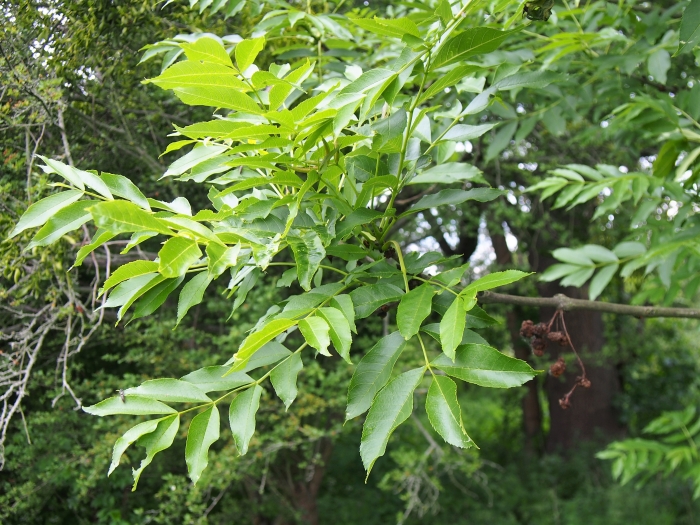European Ash
(Fraxinus excelsior)
European Ash (Fraxinus excelsior)
/
/

Agnieszka Kwiecień, Nova
CC BY-SA 4.0


















































































Estimated Native Range
Summary
European Ash is valued for its longevity and adaptability, often used in urban environments, reforestation, and as an ornamental tree for its attractive form and foliage. It is relatively easy to maintain, requiring full sun and medium water, and is tolerant of various soil drainage conditions. However, it is susceptible to ash dieback disease and the emerald ash borer, which can be fatal. It is also known for its quality wood, used in making tools, sports equipment, and furniture.CC BY-SA 4.0
Plant Description
- Plant Type: Tree
- Height: 70-80 feet
- Width: 50-60 feet
- Growth Rate: Rapid
- Flower Color: N/A
- Flowering Season: Spring
- Leaf Retention: Deciduous
Growth Requirements
- Sun: Full Sun
- Water: Medium
- Drainage: Fast, Medium, Slow
Common Uses
Bee Garden, Bird Garden, Butterfly Garden, Deer Resistant, Edible*Disclaimer: Easyscape's listed plant edibility is for informational use. Always verify the safety and proper identification of any plant before consumption., Salt Tolerant
Natural Habitat
native to Europe from the Arctic Circle to Turkey, it thrives in deciduous forests, often alongside rivers and in fertile, moist, well-drained soils
Other Names
Common Names: Common Ash, Almindelig Ask, Gewöhnliche Esche, Esche, (Lehto)Saarni, Frêne Commun, Frêne D’Europe, Es, 구주물푸레, 구주물푸레나무, Jasen Vysokij
Scientific Names: , Fraxinus excelsior, Fraxinus excelsior var. excelsior, Fraxinus monophylla, Fraxinus excelsior var. monophylla, Fraxinus verrucosa, Fraxinus pendula, Fraxinus excelsior f. aureopendula, Fraxinus excelsior f. pendula, Fraxinus excelsior var. communis
GBIF Accepted Name: Fraxinus excelsior L.